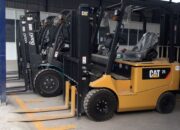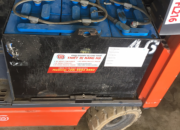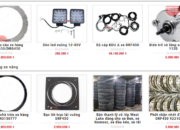Forklift pallet truck, also known as pallet truck, pallet truck, toad forklift, stand-up forklift. This series of vehicles is usually designed to be very compact, only the engine part is more compact than the hand pallet truck. Pallet forklifts are designed with the following types: automatic (motorized from lifting system to moving system), semi-automatic (motorized moving parts). The pallet trucks usually have a load capacity of 1 to 2 tons, a lifting height of no more than 1 meter, flexible mobility, using an electric motor.
Applications of pallet trucks: Used for loading and unloading goods in containers, loading and unloading goods in factory warehouses, cold storage, supermarket systems…
Samcovina Company imports and distributes pallet trucks in large quantities at good prices, if you have a need, please contact us for detailed advice.








Chúng tôi muốn mua chiếc xe nâng Pallet có tải trọng 1.5 tấn sử dụng trong kho lạnh, cty có chiếc xe nào phù hợp báo giá cho chúng tôi nhé
Cảm ơn
Vâng chúng tôi gửi cho anh một số mẫu rồi nhé, nếu có gì cần trao đổi thêm, anh có thể liên hệ với chúng tôi qua số điện thoại nhé
Thân mến